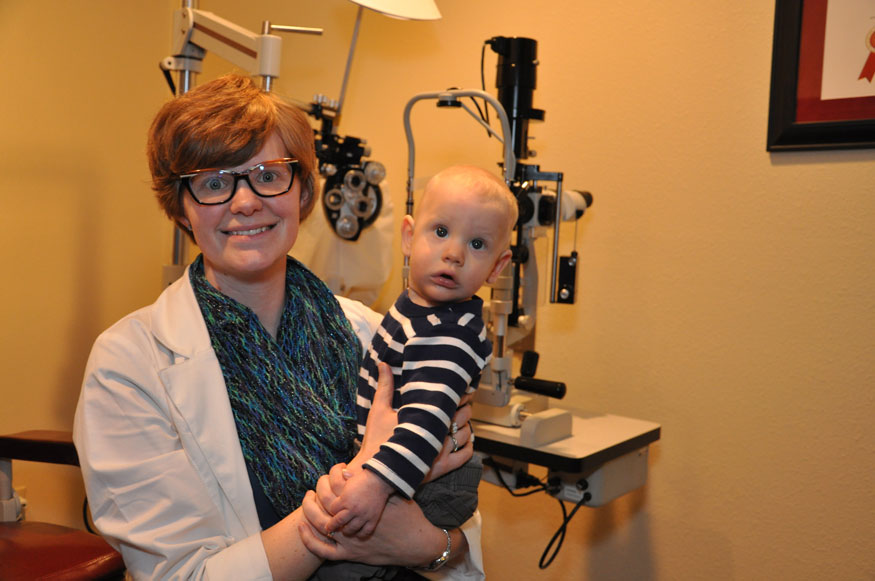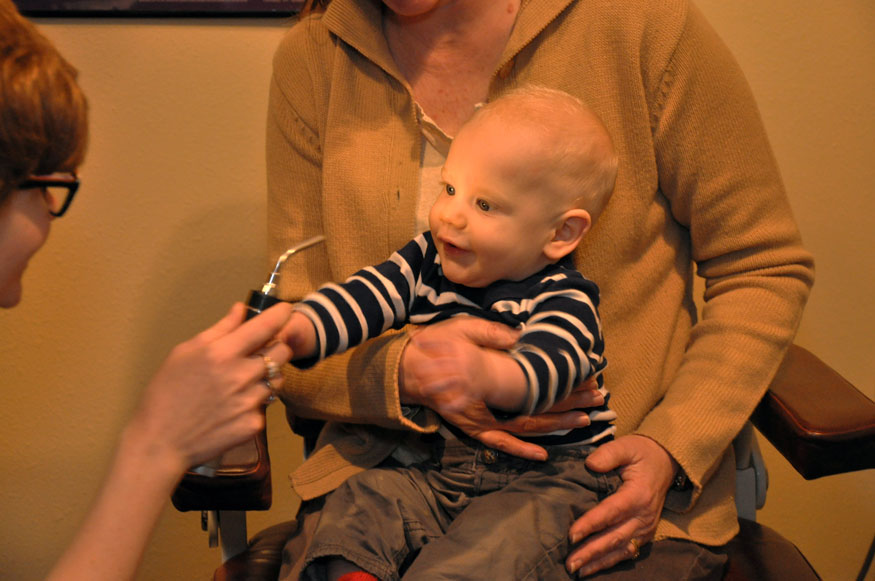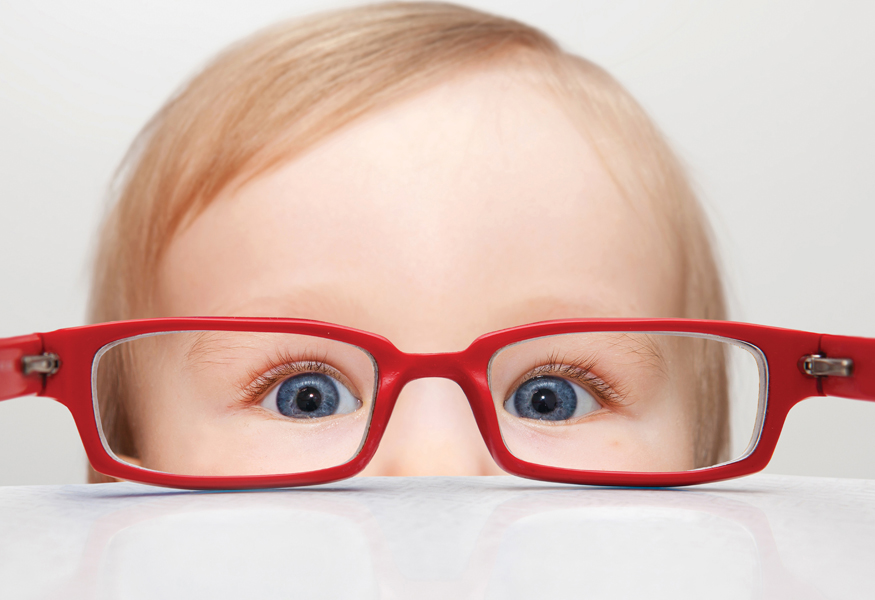At First Sight
Testing infants’ eyesight—long before they can speak about what they see—can prevent life-long vision problems.
Dr. Sarah Kuipers, an optometrist at Independent Optical in Rapid City, is one of several Black Hills-area specialists who participate in a national program called InfantSEE®. The program provides a one-time, no-cost eye and vision assessment for babies six to 12 months old. There are no qualifying requirements, and participating doctors are not compensated in any way; they agree to be part of the program because they understand the value of early diagnosis and treatment of problems related to vision and the eye in general.
“Vision care is so much more than glasses—sometimes it is a physical/muscular issue,” says Dr. Sarah. She reports that often parents may not consider infant vision care a priority. “Since infants can’t identify letters or describe what they see, parents often ask, ‘What’s the point?’” However, when optometrists examine infants, they are looking for the same important concerns as with adult patients—they just approach the process in a different way.
The list of infant assessment criteria includes ocular motility (the ability to move the eyes to follow a visual target), binocularity (the ability to move the eyes in tandem), and refractive status (issues like near- and farsightedness, which can cause blurry vision). By the age of six months, your baby’s eyes should be working together, and vision is much more developed than at birth. Please note: some infants (about one in ten) require drops to relax (dilate) the eye muscle for further examination—a painless process that doesn’t bother the baby, but may cause a moment of new-parent anxiety for Mom or Dad. The entire exam takes just a few minutes and many babies react to the experience as if it were a game—tracking objects and following visual cues from the doctor.
Your pediatrician is a good front line for everything related to your child’s health, but significant eye concerns can sometimes be missed. Minor issues can develop into significant problems by the time your child reaches school age and has her first “big kid” eye exam.
Dr. Sarah encourages parents to seek out an InfantSEE®-participating optometrist to ensure that their children receive the best vision care possible. “Vision is the most important sense our children use to learn, and it costs nothing to have your baby’s vision thoroughly examined
by a doctor as part of this program.”
To learn more about infant eye health or to find a participating physician, visit infantsee.org.
By Liz Sagaser

Dr. Sarah’s Family Tree
Dr. Sarah Kuipers is a third-generation eye-care professional, following in the footsteps of her grandparents—founders of Independent Optical—and uncles. She spent lots of time at the eye clinic as a child, but planned to pursue another medical specialty as a pre-med student. During a four-month hospital training program for undergraduates in Guadalajara, Mexico, Dr. Sarah saw firsthand the incredible, nearly instantaneous impact that vision care and correction has on the life of a patient. It was then that she decided to pursue optometry, and to join her extended family at Independent Optical.

One Baby’s Lucky Day
Dr. Sarah told the story of a ten-month-old boy who accompanied his mom to her eye exam. Although Mom had no concerns about her son’s vision, he was already there—so Dr. Sarah asked, “Why not have an InfantSEE® exam?”
The moment Dr. Sarah covered the baby’s right eye as part of the exam, he began screaming. His right eye, it turns out, was a +2 on the refractive scale—close to normal. His left eye, on the other hand, was a +10 on the scale and extremely farsighted—resulting in fuzzy vision in that eye. The baby had not even “noticed it” until his “good eye” was covered.
The doctor was kind enough to pull out a +10
lens to share the experience of the baby’s vision, and it was dizzying for the grown-ups to peer through the lens.
According to Dr. Sarah, in a case like this, the brain begins to favor the “good eye” over time. This favoring can cause various conditions, including amblyopia (otherwise known as “lazy eye”) or strabismus (“eye turn”).
If left untreated over a period of years, the brain can become stuck in its ways. A patient’s appearance may be corrected with surgery, but he or she may never recover “normal” vision.
Thankfully, this little guy’s story has a happy ending. He now wears baby glasses, along with an eye patch designed to build the strength of his farsighted eye. Over time, this process will retrain his brain to rely on both eyes. His mom is grateful that her son will be able to see the world around him with enhanced clarity and focus.
By Liz Sagaser

